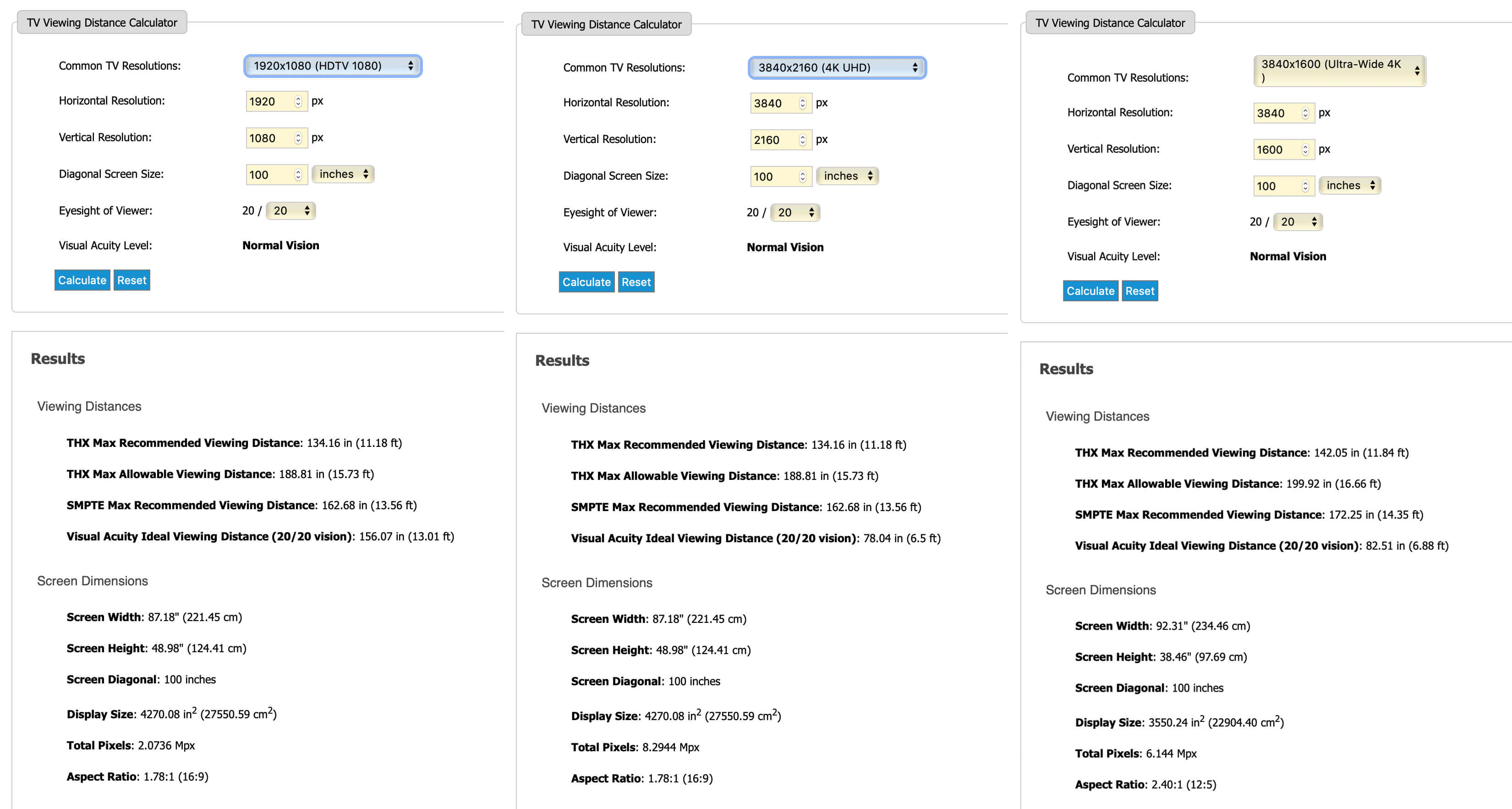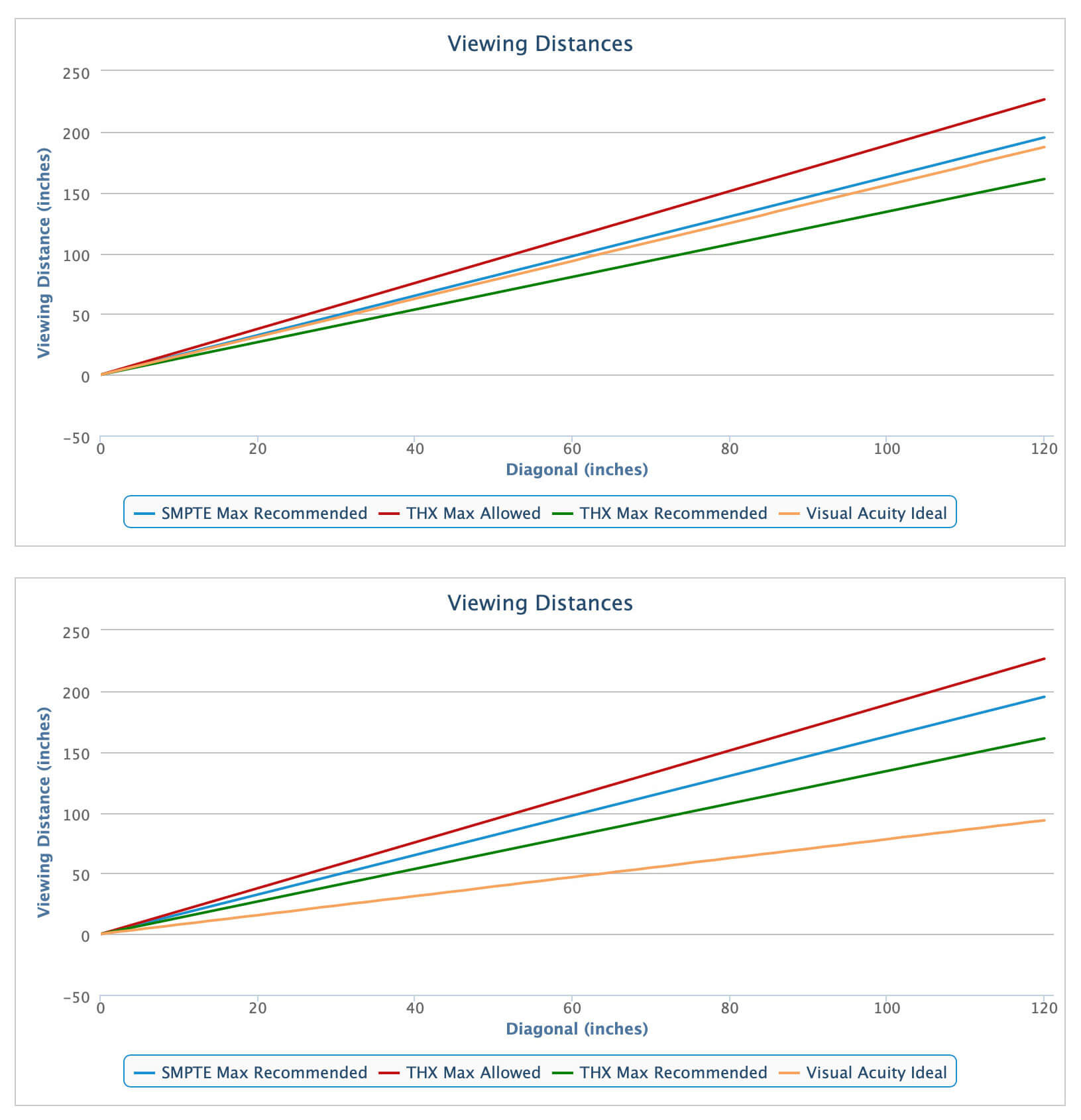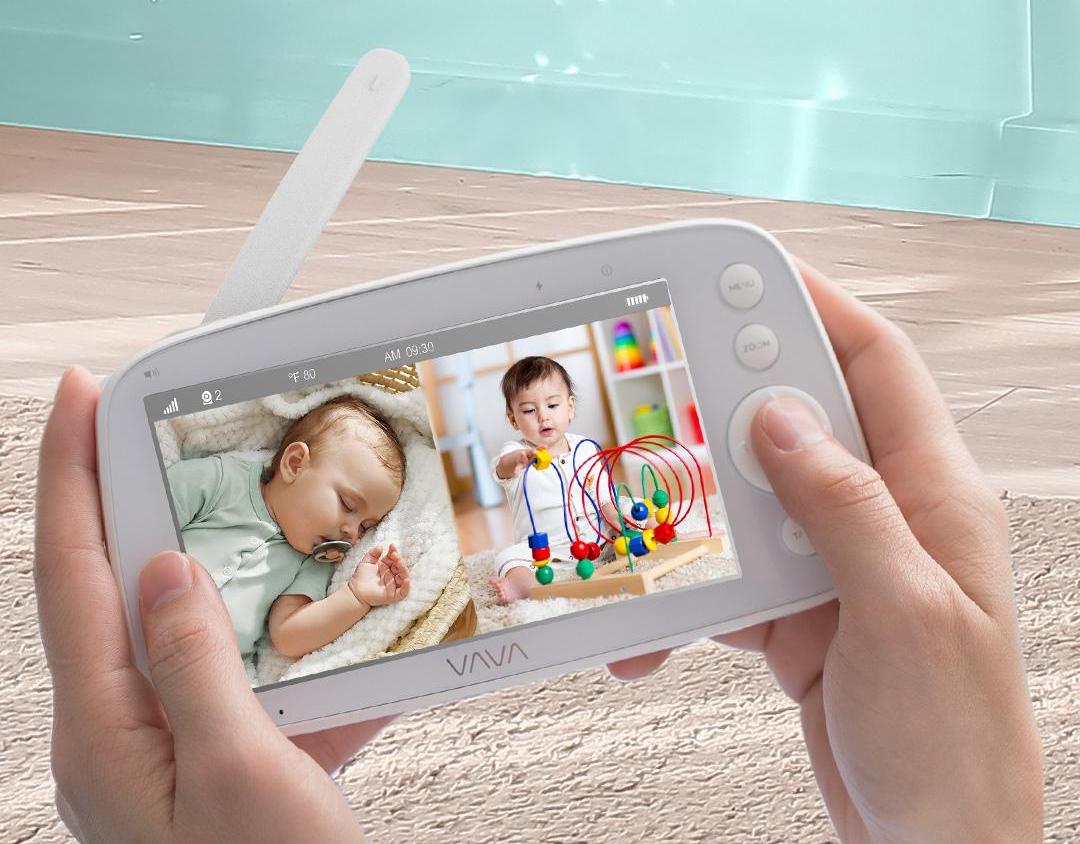One of the most vexing questions that arises when shopping for a new projector is, "How big should the screen be?" The answer isn't as simple as I wish it were. It depends on several factors, including your viewing distance and the pixel resolution of the projector.
Viewing Distance
Let's start with viewing distance. As you move closer to the screen, it fills more of your field of view. If you sit too far away, you can be easily distracted by things around the screen, and you probably can't perceive all the detail in the image. If you sit too close, you'll need to turn your head back and forth to see everything on the screen, and you might be able to see individual pixels, depending on the resolution of the image.
The amount of your field of view occupied by a screen is called the viewing angle. This is the angle formed by the sides of the screen with respect to your head (see Fig. 1).

How much of your field of view should the screen fill? According to the Society of Motion Picture and Television Engineers (SMPTE), the viewing angle should be at least 30 degrees. According to THX, the ideal viewing angle is 40 degrees, the minimum recommended angle is 36 degrees, and the minimum acceptable angle is 26 degrees.
These viewing angles translate into recommended viewing distances for screens of a given size and shape—the larger the viewing angle, the shorter the viewing distance. That requires some math to calculate, but don't worry, you don't need to pull out your old trigonometry textbook and a calculator. There are several online viewing-distance calculators that compute viewing distances based on the size of the screen.
One of my favorites is from GoodCalculators.com, which offers all sorts of useful calculators. In the viewing-distance calculator, you specify the resolution of the display (3840x2160 for UHD, 1920x1080 for HD, and many other options) and the diagonal screen size in inches. You also specify your visual acuity (20/20, 20/40, etc.), which I'll discuss in the next section. Then, hit the Calculate button to see the results (see Fig. 2).

In the left and center portions of Fig. 2, a 16:9 screen measuring 100" diagonally has a maximum THX-recommended viewing distance of 11.18 feet (36° viewing angle), a maximum THX-acceptable viewing distance of 15.73 feet (26°), and a maximum SMPTE-recommended viewing distance of 13.56 feet (30°). Notice that these distances don't change when the resolution changes from HD (left) to UHD (center), though the visual-acuity ideal viewing distance does change (which I'll discuss shortly).
In the right portion of these examples, a 2.40:1 UHD image, such as you would see from a widescreen movie on a UHD Blu-ray, measuring 100" diagonally has a maximum THX-recommended viewing distance of 11.84 feet (36°), a maximum THX-acceptable viewing distance of 16.66 feet (26°), and a maximum SMPTE-recommended viewing distance of 14.35 feet (30°).
In addition to the numerical calculator, you can scroll down to see a graphic representation of the relationship between screen size and viewing distance (see Fig. 3).

As screen size increases, so does the recommended viewing distance. If you hover your computer's cursor over a spot on the graph, a popup window will show you the diagonal screen size at that spot and the various recommended distances for that screen size. You can also see the visual-acuity ideal viewing distance based on the display's specified resolution, which I discuss in the next section.
Pixel Resolution & Visual Acuity
As we saw in Fig. 2, the THX and SMPTE recommended viewing distances have nothing to do with resolution, only the size and shape of the screen. However, resolution is critical for determining how close you can sit to a screen without seeing the individual pixels. As I said earlier, if you sit too close to the screen, you might see the pixels, which is very distracting. In this respect, the ideal viewing distance is as close as you can get without seeing pixels.
In part, this depends on your visual acuity. "Normal" vision, whether natural or corrected with glasses or contacts, is identified as 20/20—that is, you can see as much detail at a distance of 20 feet as a person with "normal" vision can see at the same distance. If your vision is, say, 20/200, you can see as much detail at a distance of 20 feet as a person with "normal" vision can see at 200 feet—not good! on the other hand, if you have 20/10 vision, you can see as much detail at a distance of 20 feet as a person with "normal" vision can see at 10 feet—in other words, better than normal.
The ability to see individual pixels also depends on how large the pixels are. At a given screen size, the pixels in an HD (1080p) image are larger than they are in a UHD image. Therefore, you can sit much closer to a UHD image without seeing the pixels. In addition, sitting closer to a UHD image also allows you to perceive all the detail in the image; if you sit farther back, your eye can't resolve the finest details.
There's only one a problem—if you sit at the ideal distance from a UHD image based on resolution and 20/20 visual acuity, you will be way too close according to the field-of-view recommendations from SMPTE and THX. The screen will fill so much of your field of view that you'll have to move your head back and forth to see everything on the screen, which becomes exhausting after a while and certainly takes you out of the cinematic experience.
Interestingly, the ideal viewing distance for HD resolution matches the SMPTE-recommended maximum viewing distance almost perfectly (see Fig. 4). And if you sit at the THX-recommended maximum or ideal distance with HD resolution, you'll be sitting too close and could easily see individual pixels. This is a good argument for UHD resolution at the industry-recommended viewing distances, even though you might not be able to discern the finest details in a UHD image at those distances.

In these two graphs, the yellow line indicates the closest you can sit to the screen without seeing individual pixels, assuming you have 20/20 visual acuity. The upper graph represents HD (1080p) resolution, while the lower graph represents UHD/4K resolution. As you can see in the upper graph, the ideal viewing distance for HD resolution closely matches the SMPTE-recommended maximum viewing distance; if you sit closer than that, you will likely see individual pixels. With UHD resolution (lower graph), you can sit much closer than any of the recommended viewing distances without seeing pixels, but in that case, the screen might fill too much of your field of view.
Bottom Line
Start at one of the recommended viewing distances based on the screen size. If you have an HD display, don't sit any closer, and move back a bit if you can see individual pixels.
On the other hand, if you have a UHD/4K display, try sitting closer if you wish, but not so close that you have to move your head back and forth to see everything in the image. Once you find your perfect distance, sit back and enjoy the perfect immersive visual experience!
TL;DR—Viewing Distance Recommendations
| 16:9 HD (1920x1080) | 16:9 UHD (3840x2160) | 2.4:1 UHD (3840x1600) | |
| Max SMPTE-recommended (30°) | 1.63 x screen diagonal | 1.63 x screen diagonal | 1.72 x screen diagonal or 1.86 x screen width |
| Max THX-recommended (36°) | 1.34 x screen diagonal | 1.34 x screen diagonal | 1.42 x screen diagonal or 1.53 x screen width |
| Max THX-acceptable (26°) | 1.89 x screen diagonal | 1.89 x screen diagonal | 2.00 x screen diagonal or 2.16 x screen width |
| Ideal THX (40°) | 1.00 x screen diagonal | 1.00 x screen diagonal | 1.27 x screen diagonal or 1.37 x screen width |
| Visual-acuity ideal (20/20 vision) | 1.56 x screen diagonal | 0.78 x screen diagonal | 0.83 x screen diagonal or 0.89 x screen width |





Share: